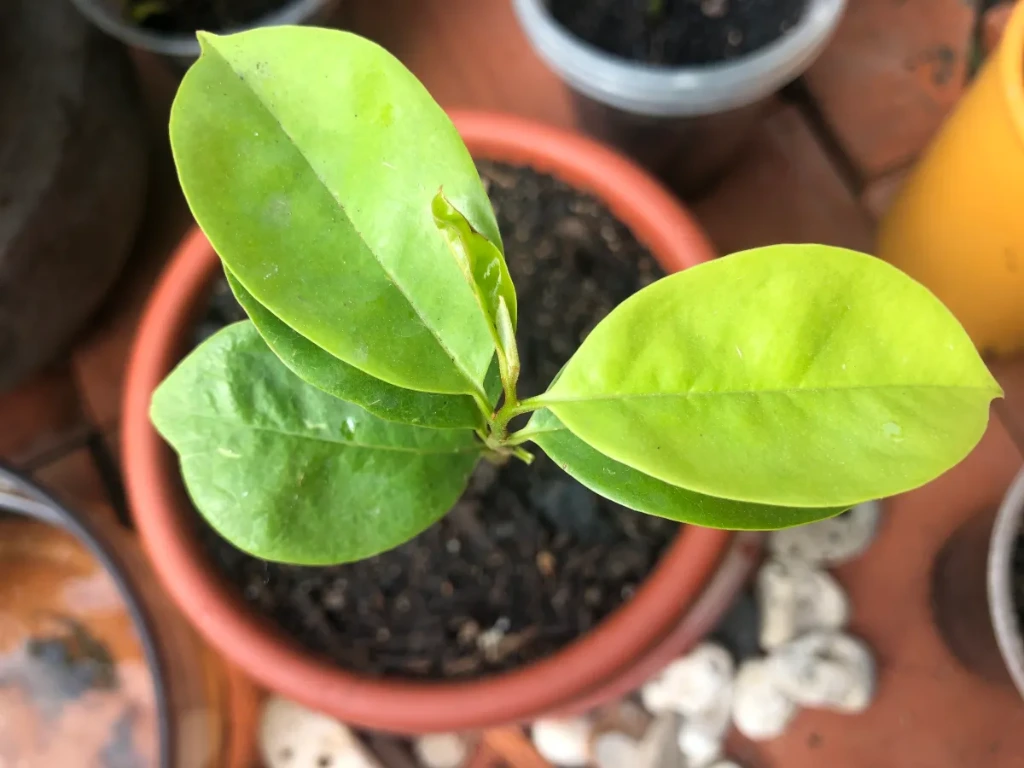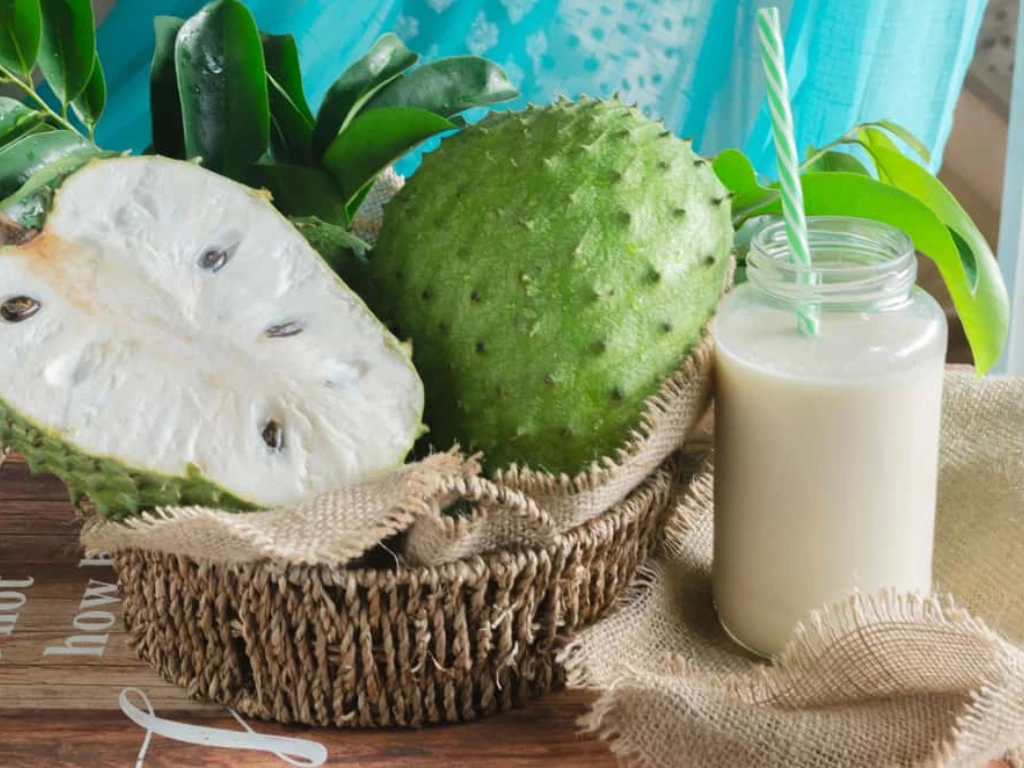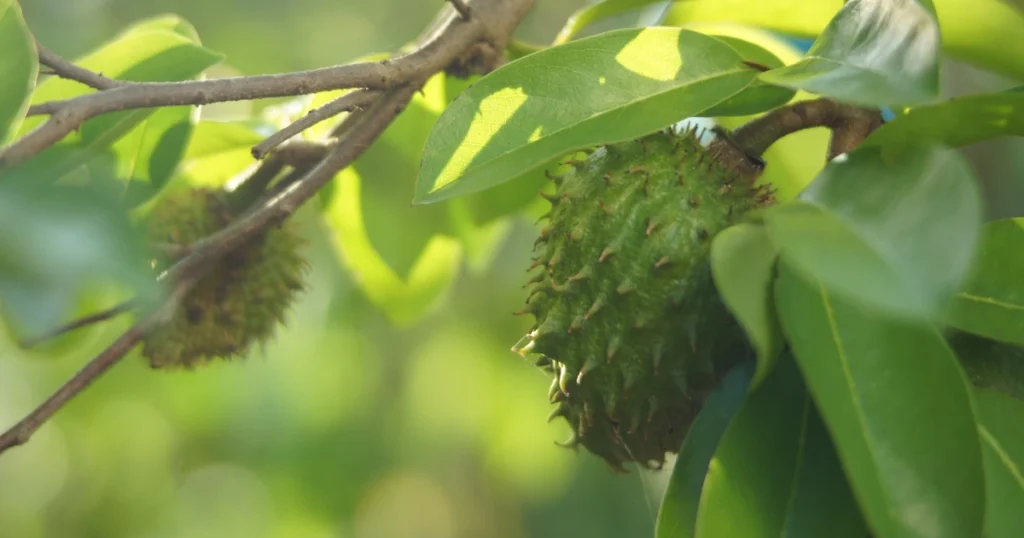Guides
How to Grow and Care for Soursop Trees: A Complete Guide
Have you ever imagined picking a fresh, tangy soursop from your own tree, its green skin hiding a soft, white, juicy interior that’s packed with flavor? If so, the Soursop (Graviola) might just be the perfect addition to your garden! Known for its uniquely sweet-and-sour taste and powerful health benefits, this tropical tree is a delightful and rewarding choice for any gardener looking to grow a nutritious fruit that’s as good for your health as it is for your taste buds.
But how do you plant, care for, and ensure your soursop tree thrives and produces fruits year after year? Whether you’re new to growing fruit trees or an experienced gardener, this complete guide will walk you through everything you need to know to grow soursop successfully, from planting to harvest and beyond.
Let’s dive in and start growing your very own soursop tree!
What is Soursop?

Soursop, also known as Graviola, is a tropical evergreen tree native to Central and South America. It’s renowned for its large, heart-shaped leaves and the incredibly unique fruit it produces. The soursop fruit, with its spiky green exterior and soft, creamy white flesh, has a taste that combines sweet, tangy, and citrusy notes, making it perfect for smoothies, juices, or just enjoying fresh from the tree.
Beyond its exceptional flavor, soursop is loaded with nutrients, including vitamin C, fiber, and antioxidants, making it a great addition to any healthy diet. The fruit is also believed to offer a variety of medicinal benefits, particularly in traditional medicine, where it’s used for its purported anti-inflammatory and immune-boosting properties.
Growing a soursop tree is more than just adding a beautiful, tropical plant to your garden – it’s about enjoying the fruits of your labor and experiencing the satisfaction of harvesting this exotic fruit from your very own backyard!
Growing Conditions for Soursop
Soursop trees thrive in warm, tropical climates, but with the right care, they can be grown in other regions with mild winters. Here’s what your soursop tree needs to thrive:
1. Light Requirements
Soursop trees love the sun! They need at least 6-8 hours of direct sunlight each day to grow and produce fruit. Plant your tree in a sunny spot for the best yields. While it can tolerate partial shade, too little sunlight can lead to poor growth and a lower fruit yield.
2. Soil Preferences
Soursop trees are not too fussy about soil, but they do have some preferences. The best soil for growing soursop is well-draining, loamy soil. If you have heavy clay soil, it’s important to improve drainage, as soggy soil can lead to root rot.
-
Soil pH: Soursop trees prefer slightly acidic to neutral soil, with a pH between 5.5 and 7.0. If your soil is too alkaline or too acidic, you can amend it with compost or organic material to help balance it out.
To ensure optimal growth, avoid planting your soursop in areas with poor drainage or areas that stay waterlogged after rainfall. If drainage is a concern, try planting your tree in a raised bed or mound.
3. Temperature and Hardiness
Soursop thrives in warm, tropical environments. It’s best suited for USDA zones 10-11, which means it prefers temperatures between 75°F (24°C) and 85°F (29°C). The tree is very sensitive to frost and cold temperatures, so if you live in a cooler climate, you’ll need to protect it during the winter months.
In regions with occasional frosts, you can grow your soursop tree in a large pot, so you can move it indoors or to a sheltered location when the weather turns chilly. Keep in mind that soursop prefers high humidity as well, so if you live in a dry area, regular watering and occasional misting will help your tree feel right at home.
How to Plant Soursop

Here’s how to start your own soursop garden!
1. Choosing Your Planting Material
You can start your soursop tree in several ways:
-
Seeds: Starting from seed is an option, but it takes time (seeds can take several months to germinate and may take years to produce fruit).
-
Saplings: The easiest and quickest way is to buy a grafted or rooted sapling from a reputable nursery. This gives you a head start, and your tree may begin producing fruit within 2-3 years.
2. Planting Steps
Once you have your sapling, it’s time to plant! Here’s how:
-
Step 1: Dig a hole that’s twice as wide and just as deep as the root ball of your sapling. This gives the roots plenty of room to spread out.
-
Step 2: Gently loosen any pot-bound roots to encourage outward growth.
-
Step 3: Place the sapling in the hole, making sure the top of the root ball is level with the surrounding soil.
-
Step 4: Backfill the hole with a mixture of native soil and compost. This will provide the tree with nutrients and ensure good drainage.
-
Step 5: Water thoroughly to settle the soil around the roots, and then add a layer of mulch around the base of the tree to help retain moisture and suppress weeds.
Caring for Soursop

Caring for your soursop tree is relatively simple, as long as you follow these essential steps!
1. Watering
Soursop trees love water, but don’t like to sit in it! Here’s how to keep your tree properly hydrated:
-
First Year: Water deeply 2-3 times a week, ensuring the water reaches the root zone (about 12-18 inches deep).
-
After Establishment: The tree becomes more drought-tolerant but will still benefit from regular watering, especially during flowering and fruiting seasons.
A good rule of thumb: Stick your finger into the soil (about 2 inches down) to check moisture. If it feels dry, it’s time to water!
2. Fertilizing
Soursop trees are pretty low-maintenance when it comes to fertilizing, but they do benefit from occasional feeding. Here’s how to give your tree the nutrients it needs:
-
Spring: Apply a balanced fertilizer (such as 10-10-10) around the drip line of the tree. This will give your tree the nutrients it needs to thrive during the growing season.
-
Organic Fertilizers: If you prefer a more natural approach, you can use compost, aged manure, or fish emulsion to nourish your tree and improve soil health.
Avoid over-fertilizing, as this can lead to excessive leafy growth with fewer fruits!
3. Pruning
Pruning is essential for maintaining a healthy soursop tree and ensuring easy harvesting. Here’s what you need to do:
-
Best Time to Prune: Prune in early spring or after the tree has finished fruiting.
-
What to Prune: Remove any dead, damaged, or crossing branches. You’ll also want to trim any shoots growing inward to improve air circulation and sunlight penetration.
Regular pruning helps your tree grow strong, stay healthy, and produce more fruit!
4. Potting and Repotting Soursop Trees
While soursop trees thrive in the ground, they can also grow well in containers — perfect for cooler climates or limited space. Here’s how to pot and repot your soursop tree for healthy growth:
Choosing the Right Pot
Select a large pot (18-24 inches in diameter) with drainage holes to prevent waterlogging. Terracotta pots work well for airflow, but plastic also suffices.
Potting Your Soursop Tree
-
Prepare the Pot: Add a layer of gravel or small rocks at the bottom for better drainage.
-
Soil: Use a well-draining, loamy mix with slightly acidic to neutral pH (5.5-7.0).
-
Planting: Place the sapling in the pot, ensuring the root ball is level with the top of the soil.
-
Water: After planting, water thoroughly to settle the soil.
Repotting Soursop Trees
Repot every 1-2 years or when the roots become root-bound. Choose a pot 2-4 inches larger and follow the same process as potting. After repotting, water the tree well and ensure it gets plenty of sunlight.
Propagating Soursop Trees
Soursop trees can be easily propagated through stem cuttings. This method typically works well if done during the tree’s active growth period, particularly in late spring or early summer. Choose healthy, new growth for the cutting, ensuring it has no flowers or fruit. Here’s how to propagate a new soursop tree from a cutting:
-
Select the Cutting: Take a 3-6 inch long cutting from a healthy, disease-free tree. Make sure the cutting is from new, vigorous growth and avoid using older or weak branches.
-
Prepare the Cutting: Remove all leaves, flowers, and fruit from the cutting, leaving just the top 4-5 leaves intact.
-
Use Rooting Hormone: Dip the cut end of the branch in rooting hormone powder to prevent rot and disease and encourage root development.
-
Prepare the Pot: Fill a medium-sized pot (about 1 gallon) with a well-draining potting mix, and thoroughly water it to ensure the soil is moist.
-
Plant the Cutting: Insert the cut end of the soursop cutting into the soil, burying the bottom of the cutting a few inches deep.
-
Create a Humid Environment: Cover the pot and cutting with a plastic bag to retain moisture. Place the pot in a bright, indirect light location. Keep the soil moist (but not soggy) and mist the cutting occasionally.
-
Monitor Root Development: After about 2 months, once roots have formed, remove the plastic covering and begin caring for the plant normally. Keep it indoors or in a sheltered location until it is ready for planting in the ground the following spring.
Growing Soursop from Seeds

While propagating soursop from cuttings is the most reliable method, you can also grow a soursop tree from seeds. However, this process can be more time-consuming and less predictable. Here’s what you need to know:
-
Seed Collection: To grow soursop from seeds, collect seeds from a ripe fruit. Clean the seeds thoroughly to remove any pulp and allow them to dry for a day or two.
-
Germination: Soursop seeds generally take 3-4 weeks to germinate, and they should be planted in well-draining, fertile soil. You can start the seeds in a seed tray or small pots, keeping them in a warm, sunny location.
-
Slow Growth: The main challenge with growing soursop from seed is the longer maturation time. It may take several years before the tree starts to bear fruit, compared to cuttings, which often yield fruit in 2-3 years.
-
Genetic Variability: Seeds from soursop fruit can produce trees that are genetically different from the parent tree, which means the fruit may not always have the same quality or flavor. This is why many gardeners prefer to propagate from cuttings or grafting.
Harvesting and Uses

Soursop fruits ripen in late summer to early fall, depending on the climate. When the fruit turns slightly yellowish and the spiky outer skin softens, it’s ready for harvest. Gently pull the fruit from the tree – it should come off easily.
How to use your soursop:
-
Fresh: The most delicious way to enjoy it is right off the tree, with the flesh scooped out and eaten raw.
-
Smoothies: Blend the pulp with other fruits for a refreshing, nutrient-packed drink.
-
Juices and teas: Soursop juice is a tropical treat, and the leaves can be used to make herbal tea.
-
Desserts: Use the pulp in pies, cakes, or jams for a deliciously exotic twist.
Common Issues and How to Solve Them
Soursop trees are relatively low-maintenance, but here are some common issues you might face:
-
Pests: While soursop is generally pest-resistant, you may occasionally encounter aphids or mealybugs. Treat with insecticidal soap or neem oil.
-
Yellowing leaves: This could indicate nutrient deficiencies or overwatering. Adjust watering schedules and add compost to boost soil health.
-
Fruit drop: Often caused by stress (like drought or extreme temperatures). Ensure regular watering and protect your tree from harsh winds.
Conclusion
Soursop is a perfect choice for gardeners looking to grow a beautiful, low-maintenance tree that offers both health benefits and delicious, exotic fruit. With the right care, you can enjoy fresh soursop year after year, whether as a snack, smoothie, or dessert.
Ready to add this tropical wonder to your garden? Follow the steps in this guide, and soon you’ll be enjoying the sweet-and-tangy taste of fresh soursop right from your own backyard!
You may like:


Swedish Ivy Care: How to Grow a Healthy, Thriving Plant
Have you ever looked at your Swedish Ivy and wondered why the leaves are turning [...]
Nov
Avoid These 10 Garlic Planting Mistakes for Bigger, Healthier Bulbs
Growing garlic at home is one of the most satisfying things a gardener can do [...]
Nov
How to Prevent Christmas Cactus Bud Drop: Tips for a Healthy Bloom
Have you ever noticed your beautiful Christmas cactus (Schlumbergera) starting to lose its buds just [...]
Nov
Discover 7 Stunning Types of Night-Blooming Cereus
Have you ever waited for a flower that only opens at night and then disappears [...]
Nov
How to Propagate Comfrey from Root Cuttings: Easy Guide for Beginners
If you’re looking to grow your own healthy comfrey plants without spending too much, propagating [...]
Nov
10 Best Christmas Plants to Gift This Holiday Season
The holiday season is finally upon us, and if you’re searching for the perfect gift [...]
Oct